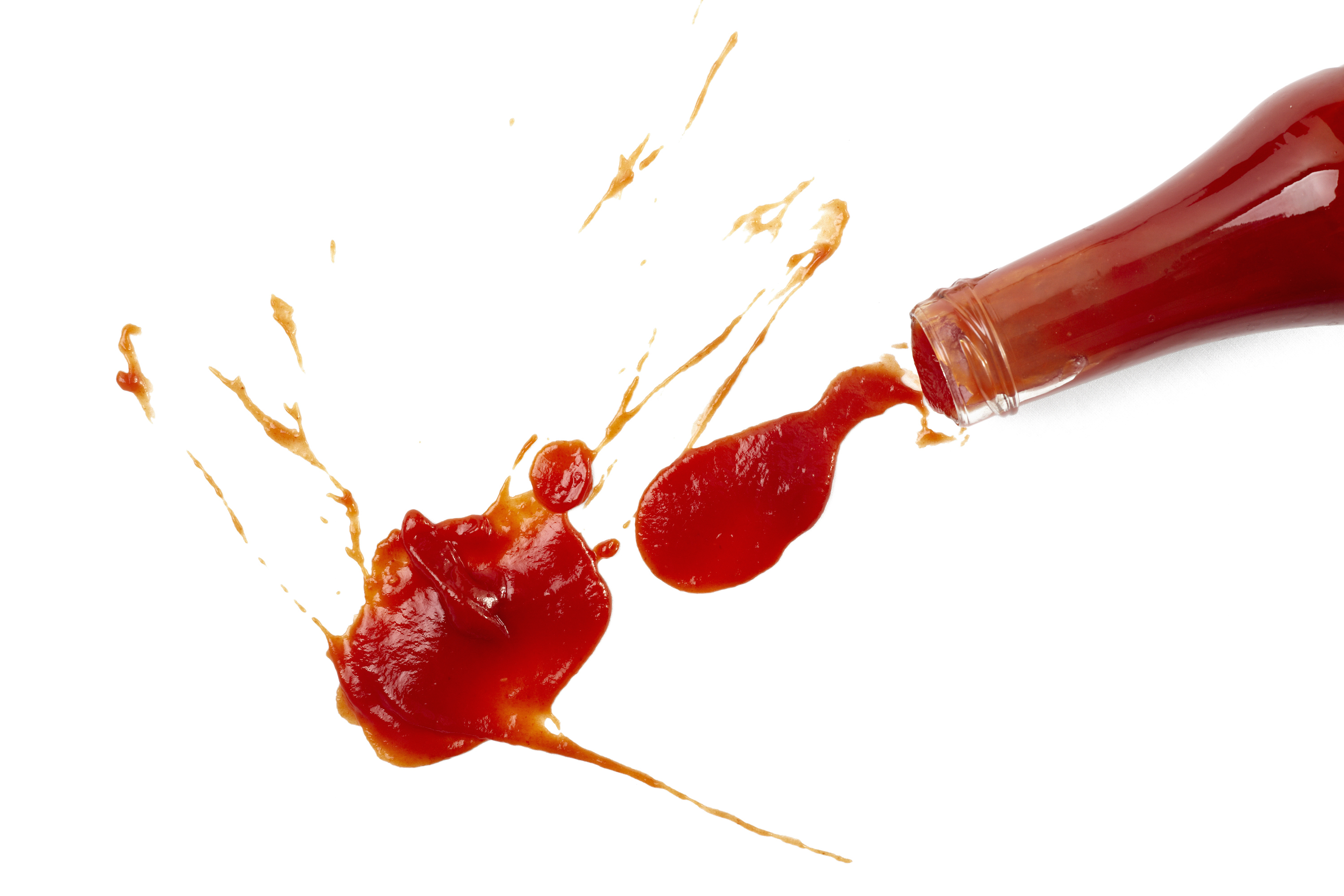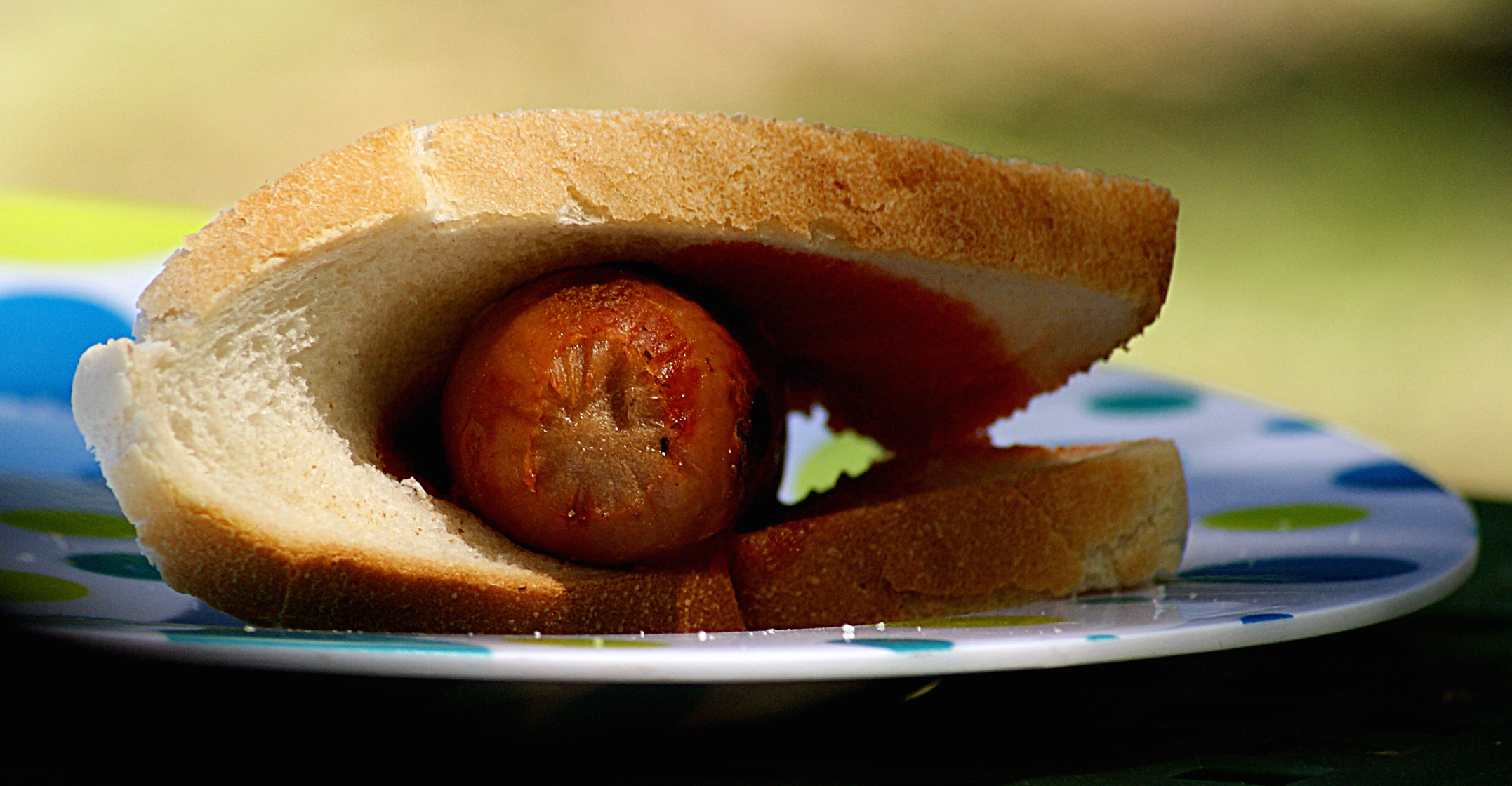Getting tomato sauce out of the bottle – minus the mess

How science can solve the splat at the summer BBQ
Published 15 December 2016
Every summer we face the same crucial question when the BBQ is ready: how to get the right amount of tomato sauce onto the food, without covering your hands and shirt in a red, sticky mess?
When Henry J. Heinz started selling ketchup in bottles in 1876, he chose glass to show his product was pure and uncontaminated. However, Heinz created an unintended consequence – how to get a sticky, gluey sauce out of the small opening of the bottle?
The first thing to appreciate about tomato sauce is that it actually doesn’t want to move onto your steak, says Dr Anthony Stickland, from the University of Melbourne.
“If you tilt a bottle of water, the water flows out because it is a liquid. But tomato sauce prefers to be in the bottle because it is technically a solid, not a liquid,” says Dr Stickland, from the School of Engineering.
Like toothpaste and paint, tomato sauce is a ‘soft solid’ or ‘yield stress fluid’ that only moves when the right amount of force is applied. The sauce is actually a suspension of pulverised tomato solids in a liquid. The solids are touching each other to create a continuous network, which gives the sauce a physical strength that resists motion. You need to overcome this strength in order to get it to flow.
Heinz scientists have figured out that the optimal flow of ketchup is at 0.045 km per hour. You need to apply the right amount of force to get it to flow at this speed, which is why the tap or whack on the sauce bottle is actually necessary.
But it’s what’s happening inside the sauce that is most fascinating to Dr Stickland and other scientists in the field of rheology. Rheology is the study of these soft solids or yield stress fluids that include many common condiments, as well as paint and industrial applications like sewage treatment and mining.
Foods often have exotic and complicated rheology in order to get the right texture, for example mayonnaise and chocolate. Concentrated suspensions do not obey Sir Isaac Newton’s Law of viscosity, published as part of Newton’s 1687 Laws of Motion, in his Principia Mathematica Philosophiae Naturalis.
The Law of viscosity states that a fluid flows at a speed proportional to the force that is applied, where the constant of proportionality is the viscosity. Because tomato sauce does not obey this Law, it is known as a non-Newtonian fluid.

Suspension viscosity is infinite at low forces, but once it yields to a force and starts to flow, the viscosity decreases the faster it flows. This is called ‘shear thinning’. At very high velocities, the suspension viscosity can be similar to water.
“Suspension rheology explains all the phenomena seen in tomato sauce bottles and provides the answers to the perennial sauce question, which can be tackled in three main steps,” says Dr Stickland.
So what are these three key steps in the tomato sauce conundrum? Dr Stickland breaks them down:
1. shake (with lid on!)
“Always start by giving the sauce a good shake,” says Dr Stickland. “You need to overcome the yield stress to mix it, so it needs a decent oomph – briefly invoke your inner paint shaker. Remember to keep the lid on, of course.”
There is a chance the solid particles in the sauce may have segregated or settled, leaving watery sauce at the top, or some sauce in the neck of the bottle may have dried out and created a plug. In either case, you need the shake to spread these solid particles in the sauce evenly, known as re-homogenisation.
2. turn the bottle upside down
The next trick is to get the sauce to the opening of bottle.
“If there’s not much left in the bottle, you may need a strong whack to dislodge tomato sauce from the bottom. Turn the bottle upside down (still with the lid on) and thrust downward at high speeds, accelerating both the ketchup and the bottle. Swiftly stopping the bottle should slump the sauce into the neck.”
3. the tilt and pour
“Now you’re ready to pour some sauce. There needs to be some force to overcome the yield stress, but not too much – the last thing you want is sauce running down your hand or, in the paint analogy, paint running down the walls before it dries,” says Dr Stickland.
“The amount of force depends on how much is left in the bottle. A full bottle will have the weight of the sauce pushing down whenever the bottle is tilted, whereas a nearly empty bottle will need some help.
“With the bottle upright, remove the lid and start to tilt the bottle, aiming at the desired location. Increase the angle until sauce begins to flow. If it does not flow once the bottle is almost upside down, there is not enough weight of sauce left to induce flow.
“This is where some sort of encouragement, like tapping, slapping or whacking, is required. But remember this sauce is shear thinning, so it flows more easily the greater the ‘encouragement’. This explains why sauce explosions can happen. The trick is to get the sauce flowing, but not too fast.
“You need to find the ‘sweet spot’ of force needed to move it towards your burger. Start by pointing the open end of the bottle toward your food at an angle of around 45 degrees with one hand around the bottle neck, and the other delivering gentle but firm taps on the bottom of the bottle. Increase the force of the taps until you balance the force applied with the mechanical strength of the sauce in order to get it to flow.”
It took 107 years for Heinz to overcome the sauce bottle problem. By understanding sauce rheology, engineers designed the flexible squeeze bottle, which was introduced for ketchup in 1983. The force to push the sauce out can now be applied by squeezing the container.
However, the glass bottle is still preferred in restaurants and cafes, especially by hipsters and other lovers of all things retro, so it will always have a place on our plates.
And now, with a bit of science, the tomato sauce can be tamed.
Banner Image: Shutterstock
